Back to A, B, C… for Gulbarga SSLC students
Via Deccan Herald
After racking their brains on a strategy to improve the abysmal results of SSLC examination in the district, managers of secondary education in Gulbarga division have finally found the answer: teaching alphabets to high school students!The alphabet and formation of words and sentences would be taught both in Kannada and English to students from VIII to X standard during the current academic year.
Teachers in both government and aided private schools have been asked to conduct a few special classes every day to make the students ‘literate’ and enhance their learning skills. Students will also be taught the tables to make them efficient in mathematics.
According to Additional Commissioner of Public Instructions Syed Abdul Rub, about 25 per cent students in high schools in the districts of the Commissionerate don’t know reading and writing. Students not able to read and write in the three classes of high school will be identified and clubbed together to impart rudimentary education.The government policy not to fail any student in primary classes is said to be the primary reason for students remaining ignorant even after coming to high school. Schemes such as Chinnara Angala, Nali Kali, etc. launched to enhance learning ability do not seem to have delivered the desired results. Even opening a separate Directorate/Commissionerate exclusively for the region a decade ago has made no impact on the SSLC results that continue to be abysmally low.
To arrest the absenteeism among students, each teacher has been directed to adopt three to 10 frequently absent students and their responsibility will be to make them attend classes using persuasive skills. The Administrative Training Institute, Mysore, has been roped in to train teachers to bring in qualitative changes in teaching. The ATI is spending Rs 10,000 on each government school which have registered poor results under the Backward Region Area Development Fund. Headmasters of schools have been made accountable by constantly interacting with teachers and students. Teachers are asked to use teaching aids.
Rub said 20 model question papers have been drafted for each subject to conduct periodical tests by releasing questions four days in advance. By the time the syllabus is completed by December, all the model question papers would have been tried out. Rub would be interacting with 10 headmasters and 10 students every day and his officers would be in touch with 330 HMs and as many students every day to ensure that the reforms are implemented in letter and spirit.
Read the entire article here.






